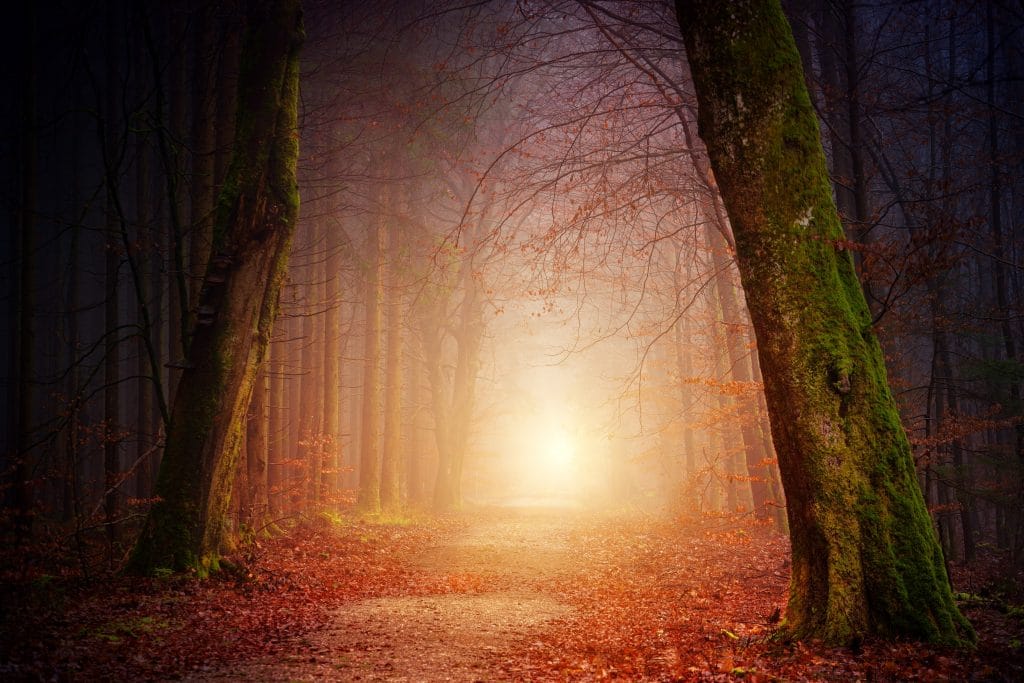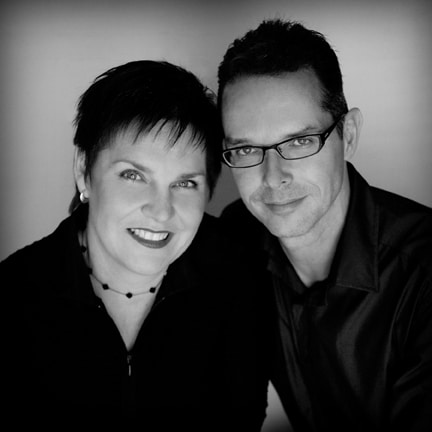
Many people relate the system of Reiki to a magical process. It is true that we often cannot see what is happening yet we reap the benefits of the practice.
As a student moves to the second level of the system of Reiki then he or she delves into the uses and practice of 3 of the 4 symbols and mantras. The first symbol, which we call by the pseudonym of CKR, has often been attributed with performing almost ‘magical’ acts. By considering CKR as a magic wand it becomes exactly that; an external source. Yet, Real Magic comes from the inside.
This is the key to everything within the system of Reiki; it all comes from within.
Relying on outside sources when developing a spiritual practice can become an obstruction. To find Oneness it can only be experienced from within and it is CKR that creates the foundation for such a practice.
In recent times it has often been taught that CKR is primarily for protection. This is not inline with the concept of working toward Oneness – in true Oneness there is neither good nor bad. Reiki practitioners move toward Oneness continually in their practice with this becoming the direct focus of the 3rd and 4th symbols within the system of Reiki. One’s work with CKR should, therefore, be the foundation of this later practice.
Ultimately, it is a practitioner’s intent that influences the effectiveness of CKR. Working from a base of fear or insecurity and ‘hoping’ that CKR will overcome these fears for you is ineffective. A practitioner must, through his or her own personal practice, learn to overcome these fears to be able to work effectively with elements such as the symbols and mantras. Relying on an external tool initially to do the ‘work’ for you can result in attachment to that tool, developing in a lack of trust in one’s own ability.
An example here is where a practitioner feels that he or she must always protect him or herself with CKR before performing a Reiki treatment on another person. If this is not completed the practitioner believes that he or she will become vulnerable to the client’s energy or imbalances. If that same practitioner forgot to ‘protect’ him or herself would he or she feel safe in performing the treatment? The answer is no. Fear, in this case, is actually promoted by use of CKR as it has been utilised with the sole intent to protect and the practitioner feels ‘unprotected’.
Naturally, symbols and mantras can be utilised at many levels. It is not ‘wrong’ to use CKR as protection but it is important to understand that there is a deeper layer to the symbols and mantras which can be accessed as well. Practitioner’s can become this energy instead of being required to constantly use these tools. Wouldn’t it be wonderful if you felt safe and protected ALL the time, instead of only when you use CKR?!
In our courses we explain how we understand this development of creating a foundation to work from and build upon it using Japanese philosophical and culturally appropriate understandings. This is a result of our research into the studies of practices from the time of Usui, Usui’s student’s books and the influences on Usui’s teachings. We never expect anyone to just take this on board. A practitioner must feel and see these understandings for themselves… and they do. Yet, often, time is needed to accomplish this. Three days for a Shinpiden course is a minimum as it gives the practitioner time to work through his or her own obstructions to experiencing an inner truth. Each day a barrier is worked through until the openness of the practitioner is like a clean slate, ready to be written with his or her own book of wisdom.
Students will ‘get’ their own level of understanding at that time in their lives. In the process of a course a glimmer of understanding is lit within and that will grow with time.
If you work with CKR as a foundation to the practice of Oneness you will find that you feel safe, protected and ready to face the world. This is certainly a bi-product of your personal practice and hard work.
Feel the difference… as they say.
Bronwen and Frans Stiene are the co-founders of the International House of Reiki and co-authors of The Reiki Sourcebook, The Japanese Art of Reiki, Your Reiki Treatment, The A-Z of Reiki Pocketbook and the Reiki Techniques Card Deck. Bronwen and Frans teach in the USA, Europe and Australia. Visit the Courses page to find a course near you.


Comments 8
This is so true. When you learn Reiki, you think of Symbols as protecting you and one tends to rely on Symbols for the effectiveness of the session but that is not the case – the Symbols are there for focus if our mind gets distracted.
In simple words—I think after working with CHK , it can make your life simple(er).. your problems , difficulties , people all will be there but you wont feel overwhelmed , fearful, angry etc. by any of that as you feel “stronger” and then life just gets easier and easier. To me that is all one really wants out of life—to be happy and strong in what ever comes your way or not for that matter. But it takes time and practice and some times lots of tears 🙂
CKR makes me feel incredibly grounded and strengthened. It reminds me of my first experiences with martial arts as a child. I was a very fearful child, because I grew up with much uncertainty due to poverty. Through a community center for underprivileged children, I started taking a martial arts class. The focus required to learn the techniques and the meditative portion of the classes, made me feel less fearful and I did not need to worry. I just needed to “breath and stay focused” as my instructor would say. I always walked away from those courses feeling strengthened and peaceful. I didn’t feel like the the drama of my childhood was gone after those classes. I just felt like I was in my body again; whole and complete regardless of what I had, or what was going on at home. Though I am no longer living in poverty, I am eternally grateful for the martial arts experience of my childhood. Reiki and using CKR has taken my feeling of being whole and complete regardless of circumstance to an even deeper level. When I am grounded, my clients sense it and in turn, seem to be more open and receipted to healing. The importance of using CKR correctly can not be stressed enough. It changes your disposition and how you interact with the world. You are more likely to hear others instead of seeking to be heard, because you are not seeking validation outside of yourself. You become a better employee, because you are focused on what you are doing and fully present when you are interacting with others. Most importantly for me, I feel less in my head and more present the deeper I go in my practice using CKR. Working with and understanding CKR is an fundamental essential in any reiki practice. I highly recommend focusing on CKR before moving on to the other Jumons.
Hi Sonia,
Thank you for sharing your story.
Yes the more we are grounded the more focused we will be and the more we look inwards for our own personal spiritual journey.
I can not emphasise working with the CKR enough to people as in our society we are so in our head.
Keep up your good work.
Love
Frans
Where did the idea of sounding the symbols with their Kotadama vowels and consonants come from? I have never learn them as individual sounds, I have only learnt about them on my travels.
Hi Miriam,
When the system of Reiki came to the west we were taught to draw the symbol once and say the mantra 3 times. Often externally.
However traditionally mantras/symbols are for internal development, so when we start to focus on the mantra and symbol again and again and again we repeat it many times in a session.
Okuden means inner or hidden teachings, this point towards what is hidden inside of us, our True Self. So if we use the mantras/symbols externally it will be very hard to find what is hidden inside of us. Therefore we have to use it internally.
Does that make sense?
Yes, it makes perfect sense. I was given a mantra when I was twenty and it was sounded internally. However, I did not get on with it that well although I persevered for many many years.However, there is a time and place for sounding aloud. If you sound pure vowels externally they are very beautiful. I love Jonathan Goldman’s ‘Reiki Chants.
I am still not entirely clear about the difference between symbols and Kotadama. I am talking about Kotadama being used as vowel sounds and leaving some of the consonants out such as CKR we say in its Kotadama for o u ei.
Hi Miriam,
Externally for me doesn’t mean aloud but more using it on others which is done in many Reiki Schools.
The symbols are the drawings so to speak and the mantra is CKR, SHK etc.. The symbol is not called CKR, CKR is the mantra/kototama. The symbol is the visual tool and the kototama is the auditory tool to help us to find our True Self.
Kototama means a word carrying spirit, spiritual power contained within a word.
So within CKR we can see a certain power and the same within the other kototama within the system of Reiki.
Within these teachings you have the 5 great sounds; A O U E I and from these all the other sounds are born.
During the shinpiden class we will look at these sounds within each of the kototamas within the system of Reiki and you will see some interesting teachings hidden in there 😉
These kind of teachings have been taught within Japan for many centuries. So I am not surprised that Usui-san used them as well. Morihei Useshiba, founder of Aikido, started to used them as well.
Here are some links you might like:
http://www.monroeinstitute.org/thehub/kototama-vibration-of-the-universe
https://www.youtube.com/watch?v=Fs53G4hsMwk
http://www.ihreiki.com/blog/article/review_-_journey_in_search_of_the_way/
Love
Frans